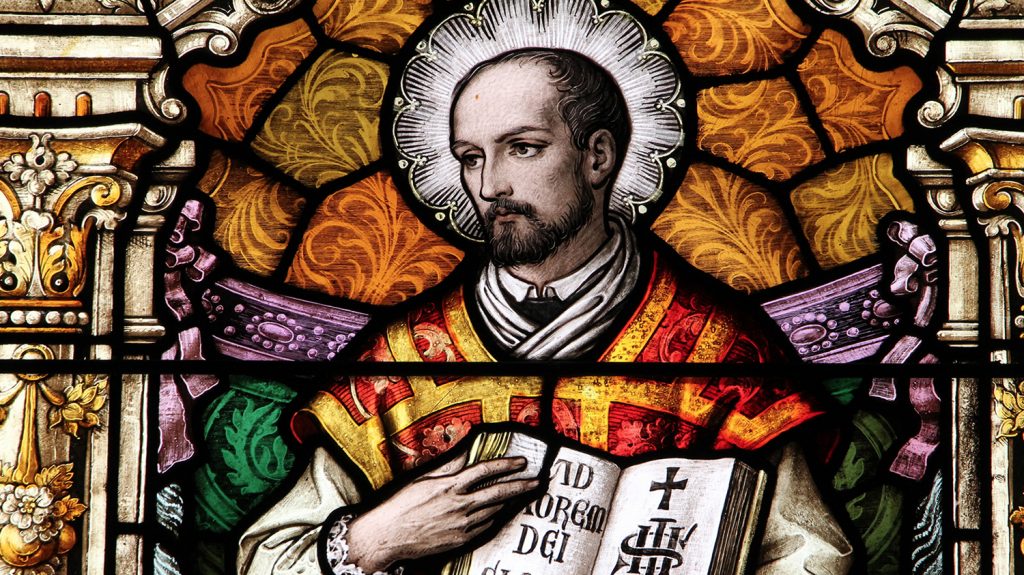The Basque soldier Ignatius Loyola (above, real first name, Iñigo) had his leg shattered today in 1521 when a French canonball bounced off a wall in Pamplona, the city he was defending. He spent part of his convalescence at an abbey in Catalonia where he swopped his fine clothes for sackcloth and surrendered his sword before a statue of the Virgin of Montserrat. This was the beginning of a journey which led Iñigo to create his Spiritual Exercises, a practice of prayer and meditation used by Christians around the world today, and found the Society of Jesus (whose followers were quickly called Jesuits) some 16 years later, in 1540.
‘Take, O Lord, and receive all my liberty, my memory, my understanding, and my entire will. Whatever I have or hold, you have given me; I restore it all to you and surrender it wholly to be governed by your will. Give me only your love and your grace and I am rich enough, and ask for nothing more.’ Prayer of St Ignatius Loyola
Today in 1940, the first 30 prisoners arrived in a new Nazi concentration camp, Auschwitz, from the Sachsenhausen concentration camp. They were criminals, brought in to run the camp, with the result that pitiless brutality and sadism ruled Auschwitz from the beginning.
York Minster was ravaged by fire today in 1840 for the second time in 12 years. The first fire, in 1829, had been arson, but this time, the man repairing the cathedral clock left a candle burning in the southwest tower, which set ablaze the belfry and destroyed the whole of the nave roof and vaulting. The west end of the building was ruined, and so were the Minster finances. Deeply in debt, services had to be suspended in the 1850s.
The star preacher of the 15th century, Bernardino of Siena, has his feast day today. Large crowds came to hear him as he travelled from town to town, and his four-hour sermons were direct, heartfelt and dramatic, often accompanied by a roaring bonfire on which the crowd threw the vanities he was blasting, including packs of cards, mirrors, games of dice, and showy clothes. Bernardino also popularised the IHS symbol (the letters taken from the Greek word for ‘Jesus’), holding up a board painted with the symbol as he preached on the name of Jesus. The idea caught on, and the symbol started to appear in churches.
‘Where is the root of the tongue? Tell me! Have you seen the tongue of a pig, and how it is fastened? In the same way, our tongue is fastened to the heart. What does this teach you? It teaches you this: whatever you have in your heart you say with your tongue, which is fastened to it and to it alone.’ Sermon by Bernardino of Siena
The Council of Nicea opened today in 325, called by the Emperor Constantine to settle a dispute between two versions of the Christian faith. Nothing like it had ever been seen before in the ancient world. With 318 bishops on the road, each of them allowed a retinue of priests, deacons and secretaries, the roads of the Empire were busy, and the atmosphere on the streets of Nicea was intense. As church historian Arthur Stanley said, ’The meeting of a general council is in church history what a pitched battle is in military history.’ The creed produced by the council closed with an anathema (a kind of ecclesiastical curse) against the defeated Arians, which is mercifully no longer recited in church services.
‘And those who say there was a time when he was not, or that before he was begotten he was not, or that he was made out of nothing; or who say that the Son of God is of any other substance, or that he is changeable or unstable – these the Catholic and Apostolic Church anathematizes.’ Creed of Nicea, 325
Image: Fr James Bradley
